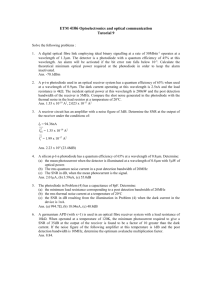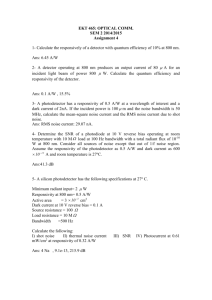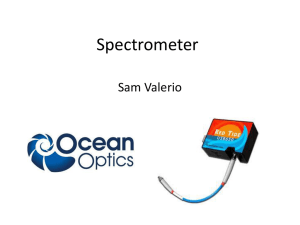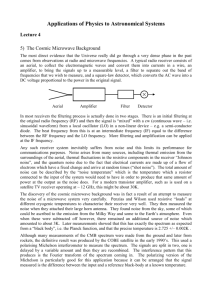Tutorial 5- Noise + Photodetector
advertisement
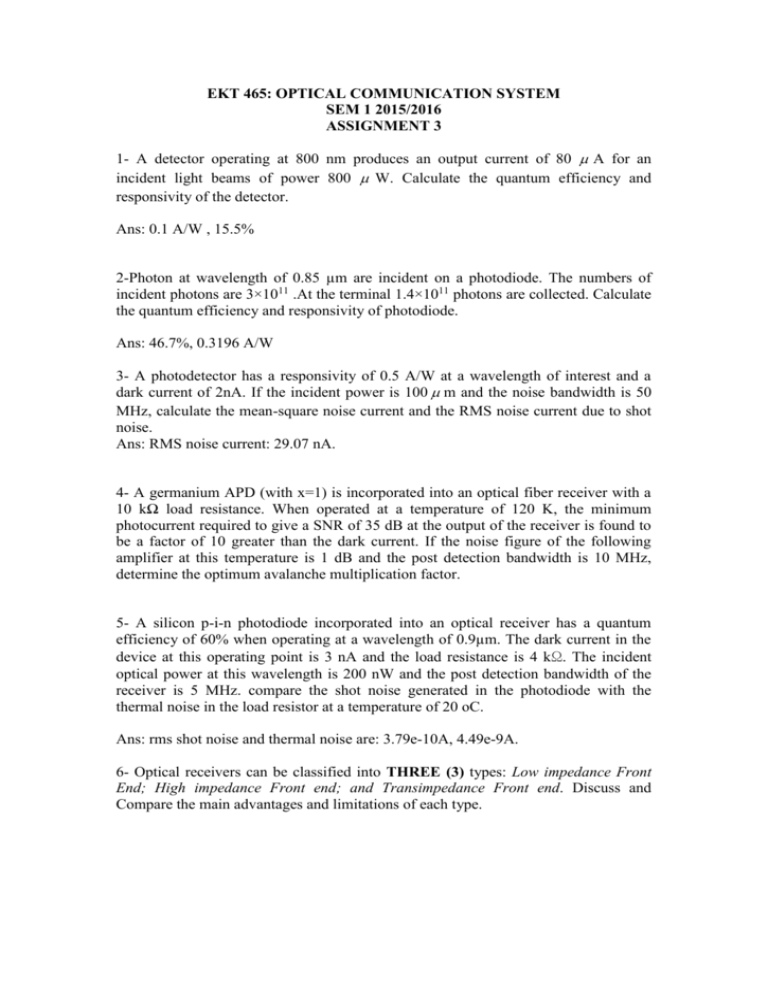
EKT 465: OPTICAL COMMUNICATION SYSTEM SEM 1 2015/2016 ASSIGNMENT 3 1- A detector operating at 800 nm produces an output current of 80 A for an incident light beams of power 800 W. Calculate the quantum efficiency and responsivity of the detector. Ans: 0.1 A/W , 15.5% 2-Photon at wavelength of 0.85 µm are incident on a photodiode. The numbers of incident photons are 3×1011 .At the terminal 1.4×1011 photons are collected. Calculate the quantum efficiency and responsivity of photodiode. Ans: 46.7%, 0.3196 A/W 3- A photodetector has a responsivity of 0.5 A/W at a wavelength of interest and a dark current of 2nA. If the incident power is 100 m and the noise bandwidth is 50 MHz, calculate the mean-square noise current and the RMS noise current due to shot noise. Ans: RMS noise current: 29.07 nA. 4- A germanium APD (with x=1) is incorporated into an optical fiber receiver with a 10 kΩ load resistance. When operated at a temperature of 120 K, the minimum photocurrent required to give a SNR of 35 dB at the output of the receiver is found to be a factor of 10 greater than the dark current. If the noise figure of the following amplifier at this temperature is 1 dB and the post detection bandwidth is 10 MHz, determine the optimum avalanche multiplication factor. 5- A silicon p-i-n photodiode incorporated into an optical receiver has a quantum efficiency of 60% when operating at a wavelength of 0.9µm. The dark current in the device at this operating point is 3 nA and the load resistance is 4 kΩ. The incident optical power at this wavelength is 200 nW and the post detection bandwidth of the receiver is 5 MHz. compare the shot noise generated in the photodiode with the thermal noise in the load resistor at a temperature of 20 oC. Ans: rms shot noise and thermal noise are: 3.79e-10A, 4.49e-9A. 6- Optical receivers can be classified into THREE (3) types: Low impedance Front End; High impedance Front end; and Transimpedance Front end. Discuss and Compare the main advantages and limitations of each type.
